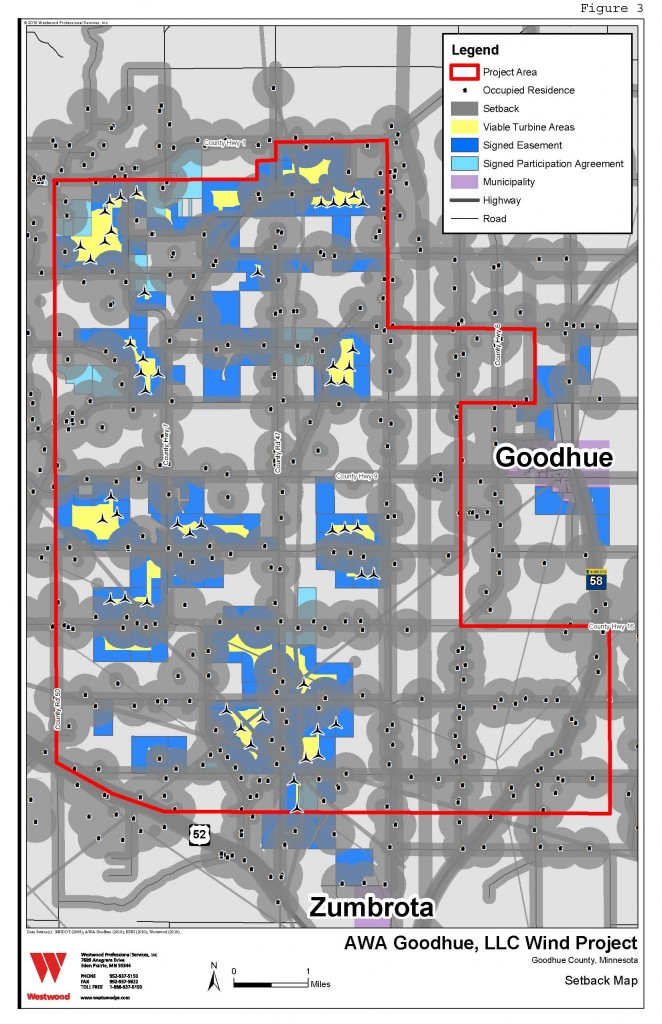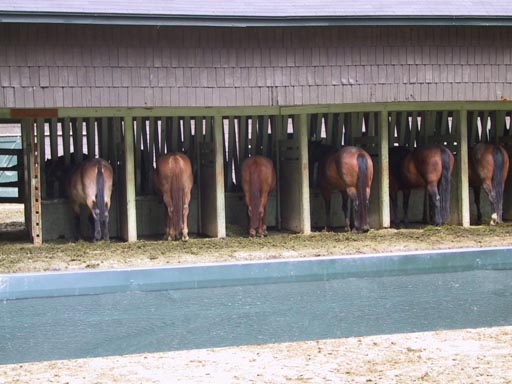Wind developer hush money for wind noise?
August 1st, 2010
Word of today’s NYT article came in over the wire today, and it’s an interesting concept to deal with a very real problem, but not nearly enough!!!
My clients raising noise issues in wind project dockets at the PUC, including the “Public Health Impacts of Wind Turbines” (09-845) have noted, “how will we be compensated for having to live with all this noise?” In our capitalist culture, $$$ is compensation. Offensive projects aren’t shut down, money is offered.
Minnesota Noise Rules don’t take into account ambient noise, they just set standards for noise, a binary limit on certain types of noise.
Minnesota’s legislature acknowledged that people don’t want to live by transmission lines, and enacted “Buy the Farm” (in full, below)which gives landowners facing a transmission line on their property can opt out, and force the utility to buy their full parcel, not just an easement. Why not the same with wind projects?
Here’s the actual waiver that the wind developer is asking them to sign:
And check this sentence, regarding the Compensation which is outlined in “Exhibit C” attached to the agreement:
Exhibit C shall be redacted from the recorded version of this agreement.
It seems to me that for the blanket “right to offend,” the offers reported are way too low, and waivers are one-sided. From the article:
Don’t change the market price? Well, that says there’s a price and that there’s a market. Caithness does not control the market — they’d better get clear on that right quick. I’ would presume that as this becomes more of an issue the price will go up! LET THE MARKET DECIDE!!! I love it when that happens…
+++++++++++++++++++++++++++++++++++++++++++++++++
Minnesota’s “Buy the Farm” law:
Minn. Stat. 216E.12, Subd. 4.Contiguous land.
Toady Mark Roberts, MD had a busy day…
July 23rd, 2010
Well, a busy couple of days. Mark Roberts, M.D., Exponent, toady for whatever project developer has the dough to pay him, made appearances in Goodhue, Minnesota for a hearing on the Goodhue Wind project, and in Wausau, Wisconsin, for an open house for a proposed biomass plant. How much of a toady is he?
Dig this, he was “Corporate Medical Director of BP.” Yes, our friend British Petroleum!
Wednesday, he was here in Goodhue, a puppet for the developers.
Here’s a link to the rest of the story: Goodhue Wind Truth
Thursday, he’s in Wausau, WI, a puppet for the developers.
Here’s a link to the rest of the story: Saving Our Air Resource, opponents of that Wausau biomass plant.
From Faux News 55:
Here’s from the Wasau Daily Herald:
Rothschild residents preview Biomass plant plans
Goodhue Wind hearing continued to 3pm today
July 22nd, 2010
The Public Utilities Commission hearing/meeting on the Certificate of Need (09-1186) and Siting Permit (08-1233) for Goodhue Wind went on until 10:30 last night, and many people still had not spoken. It starts up again at3:00 p.m., again at the Goodhue school.
For the full record, go to www.puc.state.mn.us and “Search eDockets” for 08-1233 (siting) or 09-1186 (Certificate of Need).
And here is a small part of Goodhue Wind Truth’s filings:
The “How-To” Guide to Siting Wind Turbines to Prevent Health Risks from Sound
News coverage of yesterday’s shindig:
On MPR:
At Finance & Commerce:
Goodhue Wind execs, opponents meet before administrative judge
Rochester Post-Bulletin:
Wind buffer proposals from Zumbrota, Goodhue meet resistance
And at MinnPost:
Rochester Post-Bulletin:
Proponents and critics of proposed Goodhue County wind farm speak up
On KSTP – check the video!!!
I’d guess there will be something in the News Record and the Beacon soon too…
In the STrib – info on capital funding for the Goodhue project and other National projects:
Deutsche Bank funding will give a push to local wind developer
National Wind will get help on 12 projects and a loan to expand.
By JENNIFER BJORHUS, Star Tribune
A Minneapolis-based wind developer is getting a lift from Deutsche Bank. The German investment bank will help finance 12 wind projects, including five slated for Minnesota, that National Wind has in various stages in the pipeline, National Wind said Thursday. The bank also gave the developer a senior secured loan for an undisclosed amount to finance an expansion to the West Coast and New England.
“We anticipate that Deutsche Bank will participate in financing those projects,” Leon Steinberg, National Wind’s chief executive, said in an interview Thursday.
The projects are still subject to underwriting, but it’s good news for the company at a time when many wind developers are struggling with tight financing.
Robert Martorano, managing director of Deutsche Bank’s asset finance and leasing group, said in a statement that Deutsche Bank is making renewable energy a priority.
National Wind, which employs about 42 people, develops relatively large wind farms with local land owners who maintain majority ownership when projects are done. It has sold three operational wind farms so far: one in Minnesota’s Cottonwood County and two in North Dakota. The 12 projects it is working on would generate 3,950 megawatts of electricity, or enough to power an estimated 1.6 million to 3.6 million homes, depending on weather and the sizes of the homes. The five slated for Minnesota would generate about 1,030 megawatts, or enough to power 412,000 to 927,000 homes.
National Wind made headlines in April with news that one of Texas oil magnate Boone Pickens’ companies is backing another National Wind project in the state, a 78-megawatt wind farm it’s developing around Goodhue, Minn., south of Red Wing. Pickens’ Mesa Power is helping finance that project and supplying about 52 1.5-megawatt GE wind turbines.
The state Public Utilities Commission has granted the Goodhue farm preliminary approval. A group called Goodhue Wind Truth has been opposing the project, which would span about 32,000 acres.
GWT files Testimony for 7/21 hearing
July 19th, 2010
Today (well, really really late yesterday), Goodhue Wind Truth filed the testimony of Richard R. James, INCE, for Wednesday’s hearing over in Goodhue:
A must read:
The “How-To” Guide to Siting Wind Turbines to Prevent Health Risks from Sound
And this was published earlier this month:
To check out the rest of his exhibits, look at the PUC docket for the AWA Goodhue Wind project:
- www.puc.state.mn.us
- and then to “Search eDockets”
- and then search for docket 08-1233
Wednesday’s hearing is for both the Certificate of Need and Siting Permit for AWA Goodhue’s 78MW wind project in Goodhue County, west of the City of Goodhue, utilizing the Goodhue and Vasa substations. This is the one that T.Boone Pickens is involved with, and they’re claiming it’s a C-BED project — but the AWA Goodhue LLC’s HQ is at 8117 Preston Road, Suite 200, Dallas, Texas, 75225. Walker Clarke is the “organizer” and he’s in Houston.
Yup, sounds locally owned to me!
CATF wants federal PPA?
July 12th, 2010
Oh, how bizarre can it get. Sometimes, I’m left speechless in disbelief. We all know about Clean Air Task Force’s toadying for coal, they’re the Clean Air Task FArce, but this? It’s just going too far.
CLEAN AIR TASK FORCE THINKS THE FEDS SHOULD SIGN A PPA FOR FUTUREGEN ELECTRICITY!
Really, here’s a quote from the Press Release:
And I’m sure that Tom Micheletti, of Excelsior Energy/Mesaba Project infamy, is not happy about this, not happy about it because they’re proposing the FutureGen and not Mesaba:
IGCC plants have problems getting Power Purchase Agreements because they are NOT economical, even with all the federal and state subsidies, with all the perks, with all the circumvention of regulation, as the ALJ’s noted in their Recommendation to the PUC on the Mesaba Project PPA, it’s just TOO COSTLY! And, plus, it’s NOT in the public interest!
But there goes Clean Air Task Farce saying the feds, US, we the taxpayers, should buy up the FutureGen electricity? Give me a break! Really, here it is from the horse’s mouth(the other end of the horse is further below) — this CATF press release just out:
REPORT CALLS FOR COMPREHENSIVE ARRAY OF NEW DEMONSTRATION PLANTS, $20 BILLION IN NEW FUNDING
Here’s the entire CATF report:
Contact the White House, Executive Office of the President, and tell the staff what you think of CATF’s brilliant idea and what you think of CATF’s lobbying for coal:
And this article about it:
Expert: Feds should buy FutureGen’s power output






